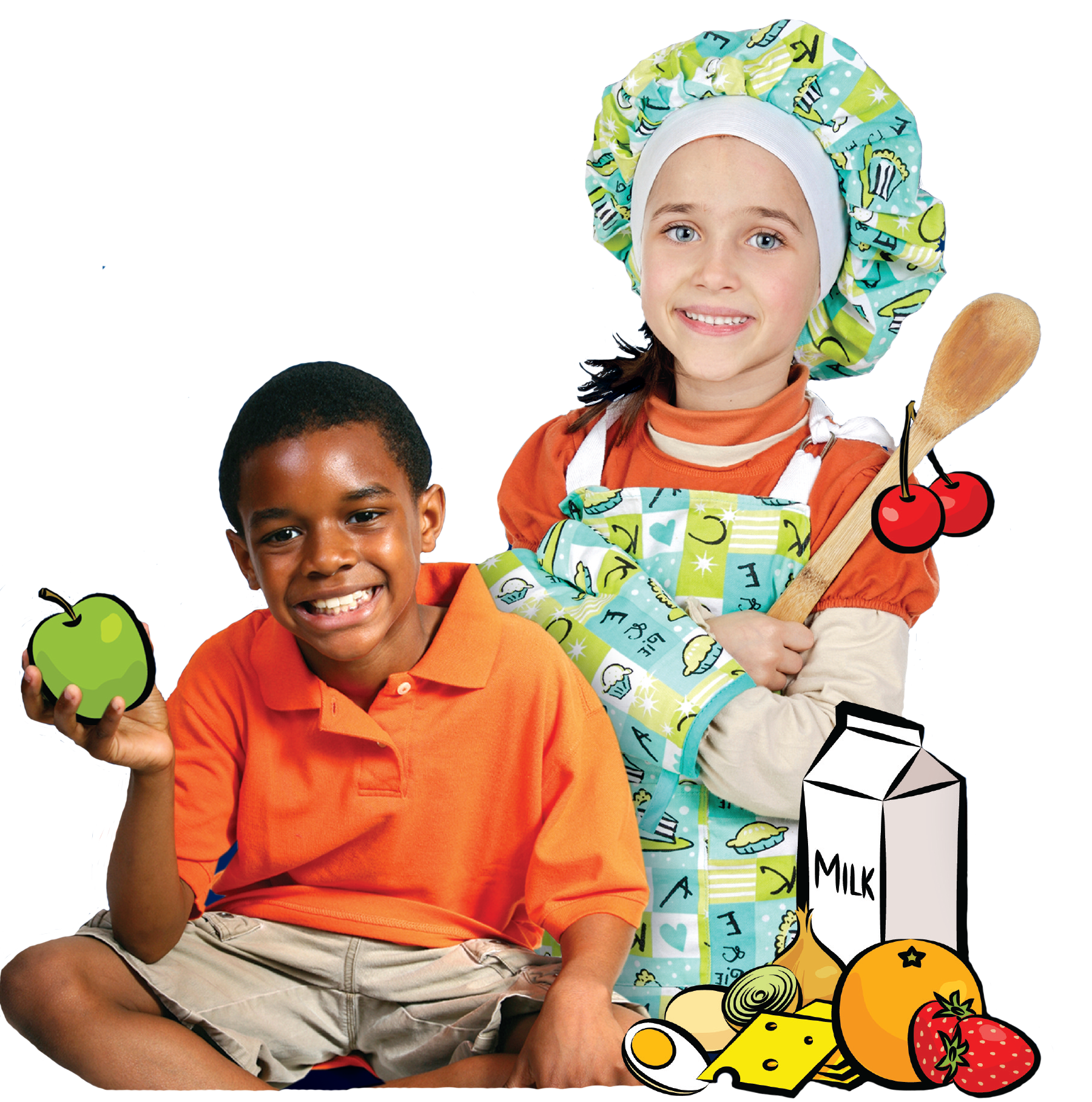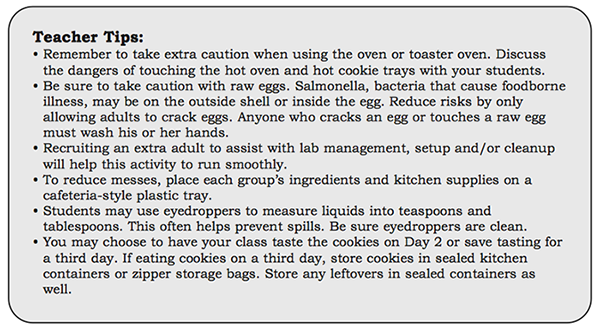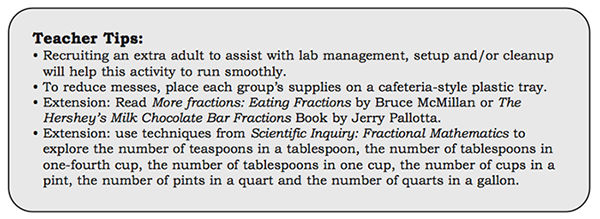Introduction to FoodMASTER:
FoodMASTER (Food, Mathematics and Science Teaching Enhancement Resource) is a compilation of programs aimed at using food as a tool to teach mathematics and science. It is our theory that if food is used as a tool to teach mathematics and science, students will be better prepared to demonstrate and apply mathematic and scientific knowledge. Because students encounter food on a daily basis, they have preexisting contextual experiences preparing them for learning new and relevant mathematics and science material.
Food is conducive to hands-on and virtual, inquiry-based, active learning that uses multiple senses to engage students in the learning process. Utilizing food allows for an interdisciplinary approach to learning concepts and ideas in a variety of scientific subjects like general science, biology, chemistry, microbiology, nutrition and health. Additionally, food labs are a dynamic way to teach mathematics concepts such as numbers and operations, algebra, geometry, measurement and problem solving.
The knowledge and skill development that can be inspired by the FoodMASTER approach is limitless. Proper use of measurement tools, data collection and interpretation, application and generalization, classification and organization, graphing and comparative analysis, understanding chemical changes, observing functions of ingredients and controlling variables, pricing, critical thinking, self-directing learning, and team building are only a few of the potential knowledge and skill development areas for intermediate grade students experiencing FoodMASTER’s scientific inquiry labs.
Additional FoodMASTER lessons can be found to cover health and nutrition topics such as:
Background for this Lesson:
Fractional mathematics is something that people use everyday. If you say “I am going to play for half an hour” or “one-fourth of our class has green eyes,” then you are talking in terms of fractions. Bakers, chefs and even kids use fractional mathematics in the kitchen. You use fractions to measure ingredients and to double recipes. In this lesson, your students will explore fractions, measure the volume and weight of ingredients and practice their measurement skills.
Welcome to the world of real life kitchen mathematics!
In this lesson students will:
- recognize the difference between wet and dry volume measures;
- identify the names of four measuring spoons and four measuring cups;
- select appropriate volume measurement tools and practice measurement skills;
- use metric and US customary units to measure weight; and
- demonstrate simple measurement substitutions (understanding of equivalents in measuring).

 In this lesson students will be learning about measurements as they make cookies. To introduce the lesson, teach your students where each cookie ingredient is produced. Begin by asking students to name some of the ingredients in cookies. List the cookie ingredients on the board and ask students where each ingredient comes from. Is it produced on a farm like wheat or eggs? Or, is it a natural resource like salt that is mined from the earth?
In this lesson students will be learning about measurements as they make cookies. To introduce the lesson, teach your students where each cookie ingredient is produced. Begin by asking students to name some of the ingredients in cookies. List the cookie ingredients on the board and ask students where each ingredient comes from. Is it produced on a farm like wheat or eggs? Or, is it a natural resource like salt that is mined from the earth?

